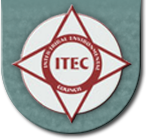Inter-Tribal Environmental Council
"...to protect the health of Native Americans, their natural resources, and their environment"


What is E-Enterprise?
E-Enterprise for the Environment is a model for collaborative leadership through which leaders from EPA, States, and Tribal environmental agencies work together to modernize our shared responsibility of protecting the environment. E-Enterprise relies on three (3) key principals to improve environmental program implementation.
What is the E-Enterprise Leadership Council (EELC)?
At the heart of E-Enterprise is a collaborative partnership: A commitment made by Tribal, State, and Federal Partners to work together using a transformative model of shared governance. EELC responsibilities include identifying, soliciting, reviewing, and prioritizing E-Enterprise projects, identifying new and existing State and U.S. EPA resource investments needed to support these projects, and ensuring alignment of projects and program activities with E-Enterprise principles.
Tribal EELC Representatives:
Useful links:
Helpful Documents for Tribal EELC Representatives:
New to E-Enterprise? Check out these documents!
PowerPoints:
Tribal Software Licensing Project:
Software Licensing Resources for Tribes: Tribal and EPA representatives convened a workgroup and through a shared governance process, discussed and developed two resources related to the addressing longer term software licensing needs. The two documents provide technical assistance to tribes who are looking for more information about the software procurement process, how to leverage grant funding, as well as options for free or low-cost software.
Tribal Citizen Science White Paper Document:
Through a shared governance process, E-Enterprise brought together partners from EPA and tribal environmental departments to share information about using Citizen Science in environmental program management. This report highlights eight Tribal citizen science projects that represent a diversity of environmental and health concerns, geographic regions, and a range of federally-recognized Tribes. Tribal citizen science projects share a commonality with all citizen science activities, in that they must address accountability – if citizen science data reveals a threat to human or environmental health, Tribal, state, and federal governments will need to respond in order to maintain trust. EPA and state agencies can be important partners with Tribes to address concerns that arise.
Tribal Support Contact Information:
E-Enterprise Bulletin
Exchange Network
The Exchange Network is a partnership of States, Tribes, Territories and EPA working together to provide better access to high-quality environmental data. This is accomplished via automation of data sharing, standardization of data structures and real-time access through a secure Internet connection.
On December 1st, 2015, the Exchange Network Governance became part of E-Enterprise for the Environment. E-Enterprise for the Environment embraces a new model for collaborative leadership among environmental co-regulators, engaging with all interested and affected parties to achieve positive environmental, human health, and economic outcomes. It builds upon the foundation of the Exchange Network, recognizing the value of a proven communications and data analytics platform for sharing environmental information to foster informed decision-making.
The Exchange Network’s joint governance model of Federal, State, Territorial, and Tribal Partners working together has been adopted by E-Enterprise. Governance consists of the E-Enterprise Leadership Council (EELC), the E-Enterprise Executive Committee (EEEC), the E-Enterprise and Exchange Network Management Board (MB), and the E-Enterprise and Exchange Network Interoperability and Operations Team (IOT).
The Tribal Governance Group (TGG) is an ad hoc group of tribal professionals working on various aspects of the EN whose primary purpose is to ensure representation of tribal perspectives and issues in the overall Exchange Network governance structure, and to foster and enhance tribal participation in the Network. TGG members also serve as representatives on the EELC, the MB and the IOT.
The Cherokee Nation is an Exchange Network grant recipient and participates on the TGG and the IOT. Please visit http://www.tribalexchangenetwork.org/home.html for more information about tribal participation in the Exchange Network.
E-Enterprise Community Inventory Platform
